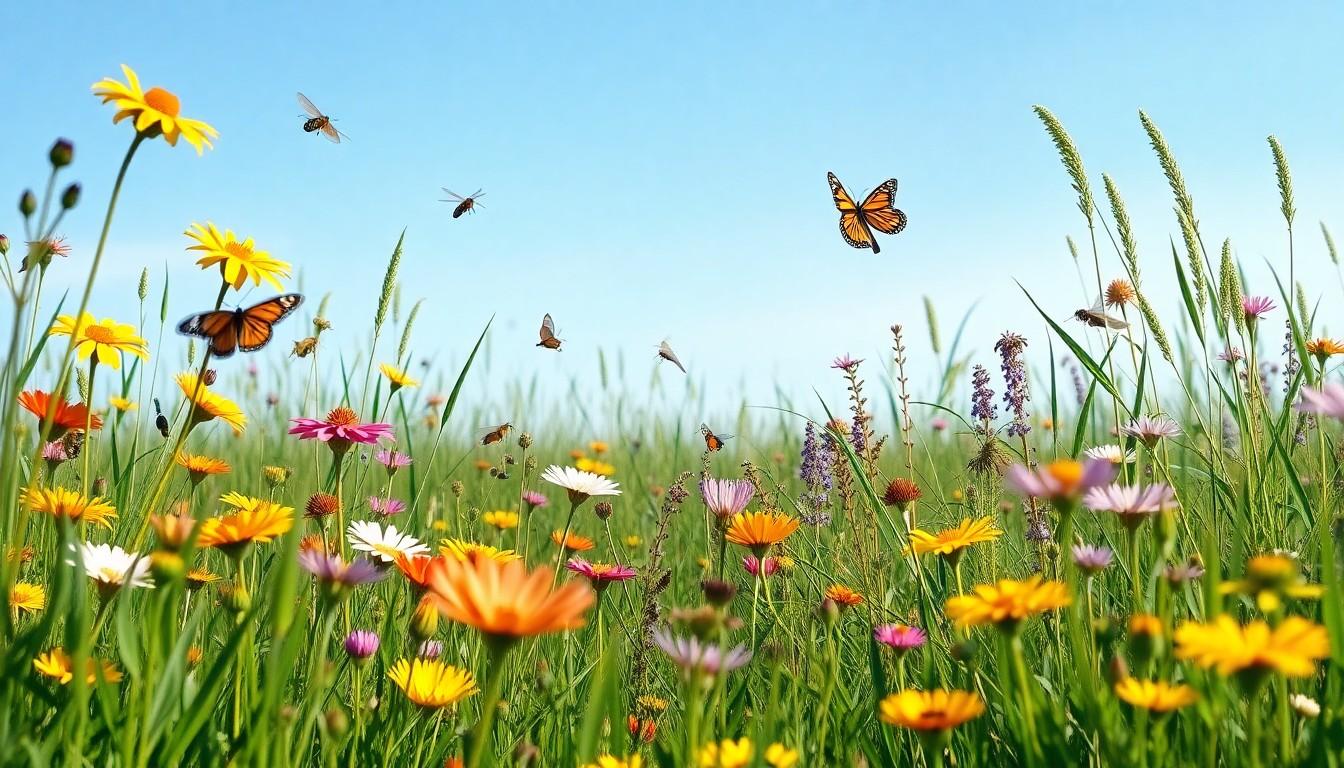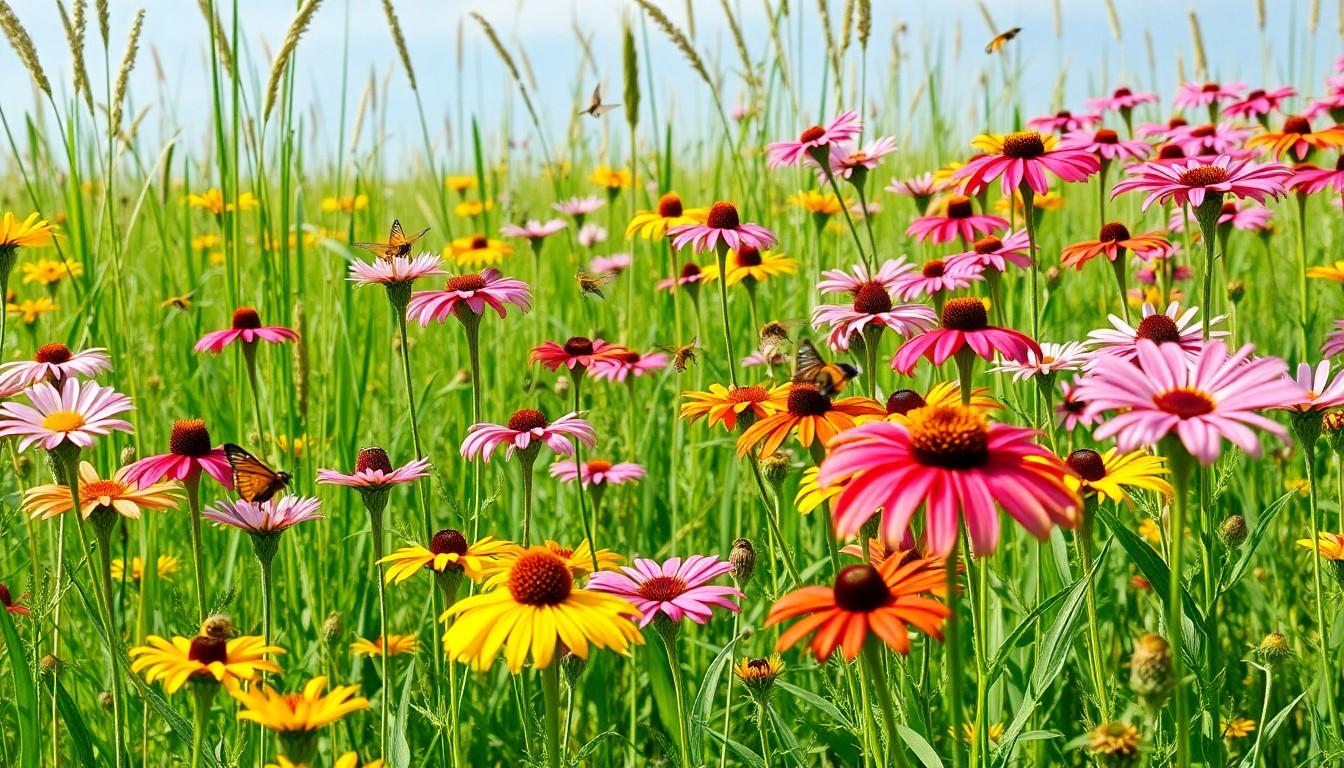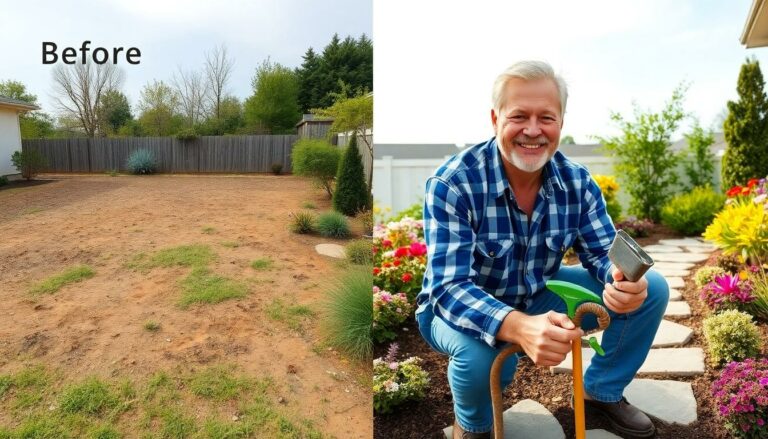Imagine stepping into a vibrant patch of wildflowers where bees buzz happily and butterflies dance like they’re auditioning for a reality show. That’s the magic of a prairie garden. These stunning landscapes not only bring a splash of color to any yard but also create a thriving ecosystem that benefits local wildlife.
Creating a prairie garden isn’t just for the green-thumbed elite; it’s for anyone who wants to embrace nature with a touch of whimsy. With native plants that require less water and maintenance, it’s like having a garden that practically takes care of itself. Plus, who wouldn’t want to impress their neighbors with a stunning display of blooms that could make even the most seasoned gardener green with envy? Dive into the world of prairie gardens and discover how to transform your outdoor space into a picturesque haven.
Overview of Prairie Gardens
Prairie gardens consist of native flora that create dynamic ecosystems. These gardens attract beneficial insects and enhance local biodiversity.
Definition and Characteristics
A prairie garden features a mix of grasses and wildflowers, reflecting the natural landscapes of prairies. Native species thrive with low water needs, making maintenance easier than traditional gardens. Vibrant colors and diverse textures characterize their aesthetics. Essential plants include coneflowers, black-eyed Susans, and prairie dropseed. Wildlife, such as pollinators and birds, find habitat and food sources within these landscapes.
Historical Significance
Historically, prairie gardens represent a connection to North America’s grasslands. Indigenous peoples utilized native plants for sustenance and medicine, highlighting their importance over centuries. The decline of natural prairies led to increased interest in restoring these ecosystems through garden design. Prairie gardens symbolize efforts to preserve native biodiversity in urban and suburban areas today. They serve as living reminders of the ecological heritage of the region.
Benefits of Prairie Gardens

Prairie gardens offer numerous advantages that enhance both the environment and local ecosystems.
Environmental Impact
Prairie gardens significantly reduce water usage by focusing on drought-resistant native plants. These plants thrive in local conditions, lowering the need for irrigation. Additionally, soil health improves through the deep-root systems of prairie plants, which prevents erosion and promotes biodiversity. Pollutants and runoff diminish as prairie plants filter water naturally. Carbon sequestration occurs effectively in these landscapes, contributing to climate change mitigation.
Biodiversity and Ecosystem Support
Biodiversity thrives in prairie gardens due to the variety of native plants. Increased plant diversity attracts diverse insects, including pollinators like bees and butterflies, which play crucial roles in ecosystem health. Bird species benefit from the cover and food sources found in prairie gardens. These cultivated spaces act as habitats for small mammals and other wildlife, fostering a vibrant ecosystem. Community engagement in prairie gardening enhances awareness and appreciation for native species, supporting overall ecological balance.
Designing a Prairie Garden
Designing a prairie garden involves careful selection and thoughtful arrangement of plants. This process creates a vibrant and sustainable ecosystem.
Selecting Native Plants
Native plants form the foundation of a successful prairie garden. Choose species that thrive in the local climate and soil conditions. Essential options include coneflowers, black-eyed Susans, and prairie dropseed, which attract bees and butterflies. Incorporating a mix of various heights and bloom times fosters visual interest and extends the flowering period. Consider seasonal variations, ensuring that plants provide color throughout the year. Utilizing local resources or native plant nurseries aids in selecting the right species for the area. Selecting these plants supports local wildlife and promotes ecological balance.
Planning the Layout
Planning the layout of a prairie garden requires attention to plant placement and spacing. Start by grouping plants with similar water and sunlight needs together. Create natural flow by arranging taller plants at the back and shorter ones at the front for a layered effect. Pathways can enhance accessibility while allowing for exploration of the garden’s beauty. Incorporate open spaces to provide visual rest and encourage wildlife movement. Additionally, consider seasonal changes to ensure the layout remains appealing year-round. A well-planned layout results in a cohesive and inviting environment, benefiting both people and nature.
Maintaining a Prairie Garden
Maintaining a prairie garden involves attentive care throughout the seasons. Regular maintenance ensures plant health and enhances the garden’s ecological benefits.
Seasonal Care Tips
Spring marks the ideal time for seeding and transplanting native plants. Watering new plants helps establish roots; however, established prairie plants require less water. During summer, monitoring for pests becomes essential. Hand-picking insects or using insecticidal soap can manage infestations effectively. In fall, cutting back dead plant material promotes soil health and prepares the garden for winter. Mulching protects the soil and conserves moisture during dry spells. Winter presents an opportunity to evaluate the garden’s performance and plan any desired changes for the coming year.
Common Challenges and Solutions
Pests pose a significant challenge in prairie gardens. Encouraging beneficial insects can naturally reduce pest populations. Weeds often compete for nutrients; routine weeding helps maintain plant health. Soil erosion might occur in areas with poor coverage; establishing ground cover plants can prevent this issue. Excessive rainfall can lead to waterlogging, which stresses plants. Creating drainage paths or using raised beds can alleviate this problem. These practical solutions enhance the resilience of prairie gardens, ensuring plant success and biodiversity.
Conclusion
Embracing the beauty of prairie gardens offers a unique opportunity to create vibrant ecosystems right in one’s backyard. These gardens not only enhance the landscape but also play a crucial role in supporting local wildlife and promoting biodiversity. With their low-maintenance requirements and drought-resistant plants, prairie gardens are perfect for anyone looking to beautify their outdoor spaces.
By thoughtfully selecting native plants and implementing sustainable gardening practices, individuals can contribute to environmental preservation while enjoying the aesthetic rewards of a colorful garden. As more people engage in prairie gardening, the collective impact on local ecosystems becomes even more significant, fostering a deeper appreciation for the natural world.




